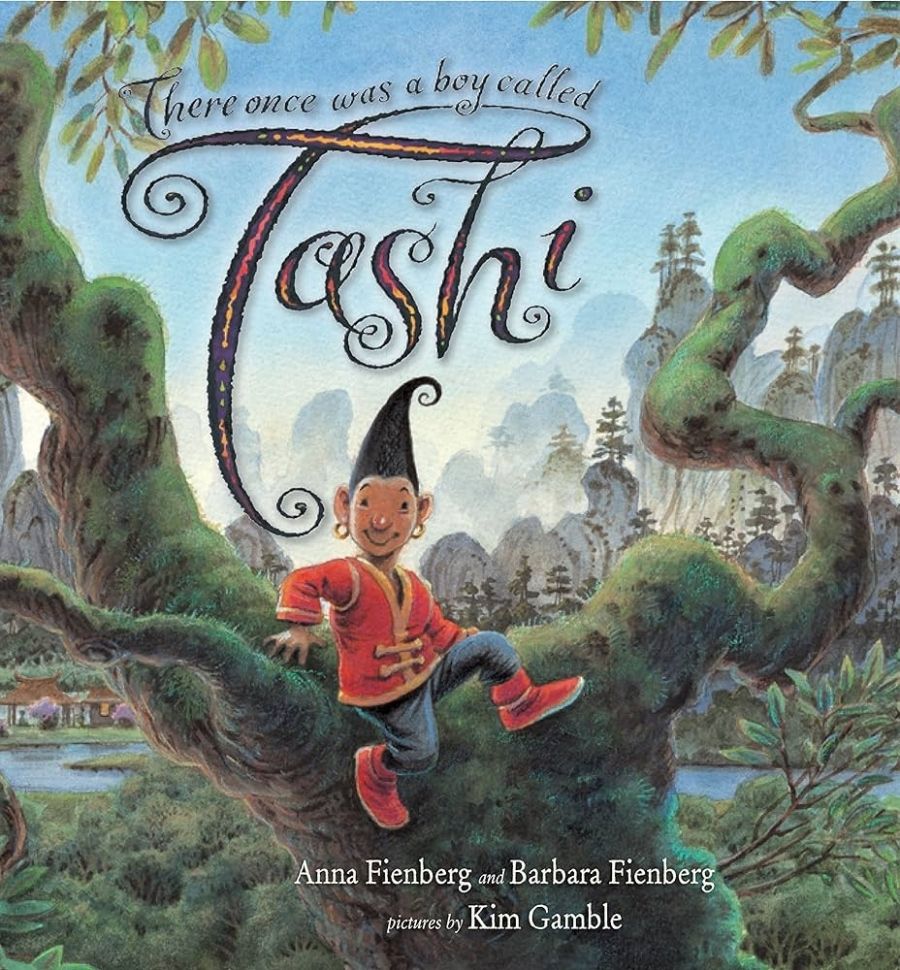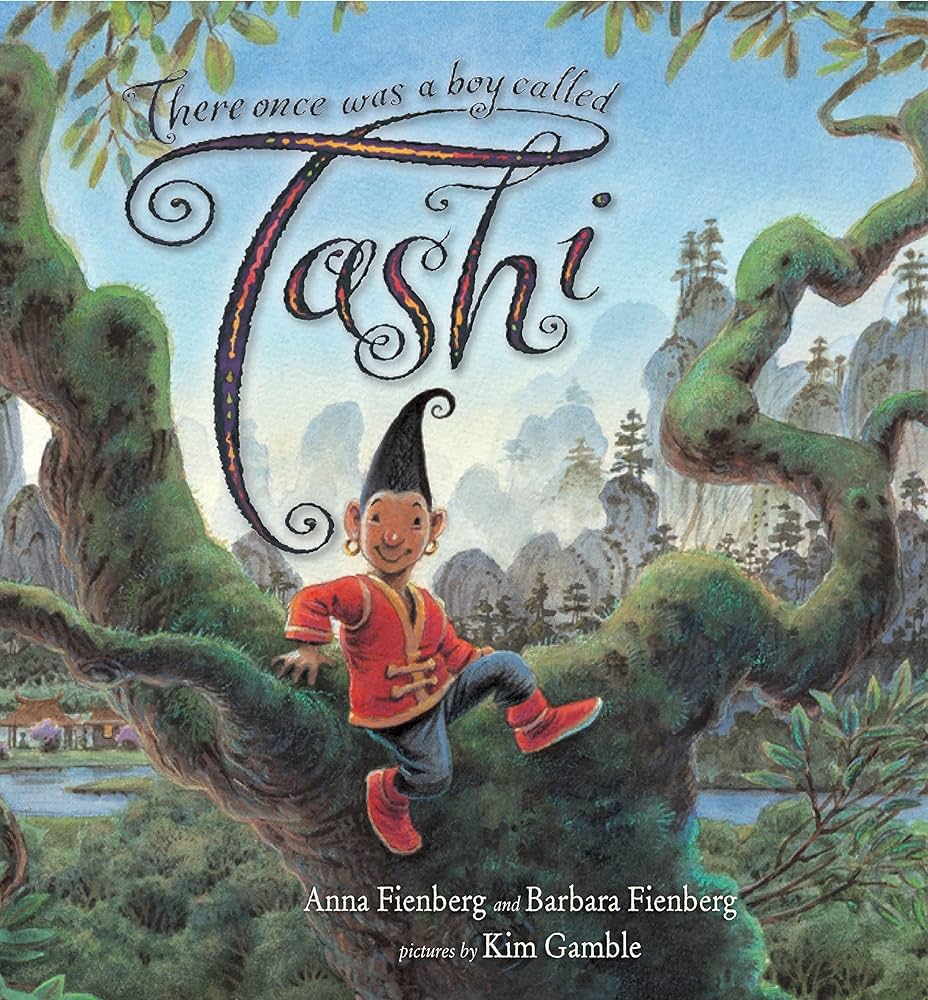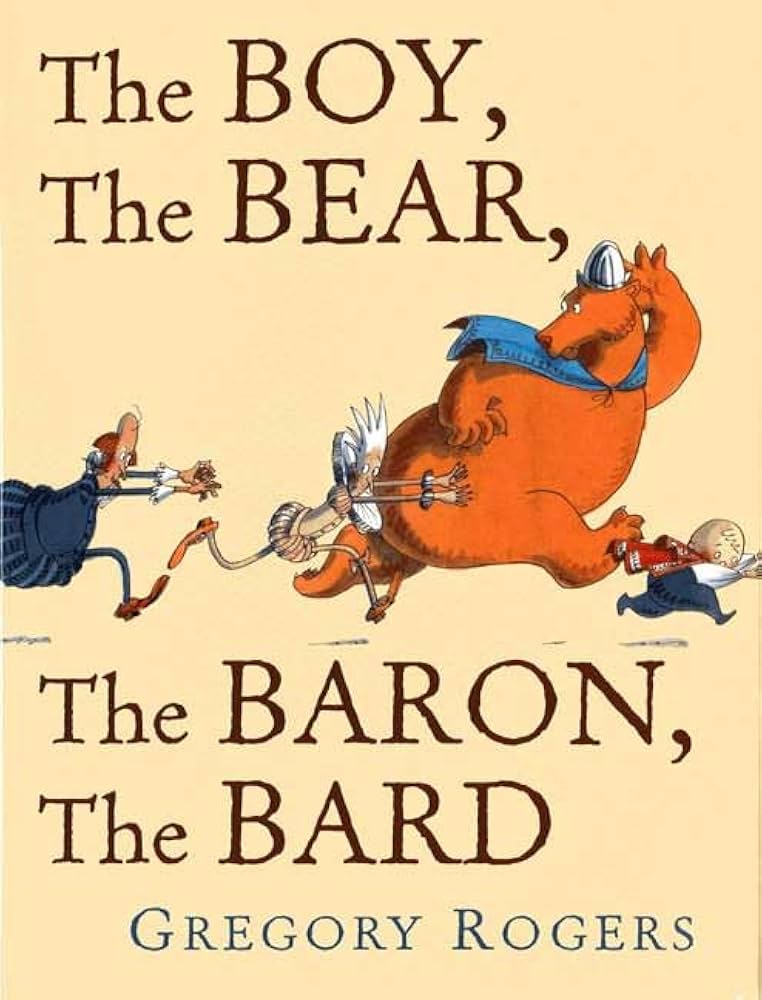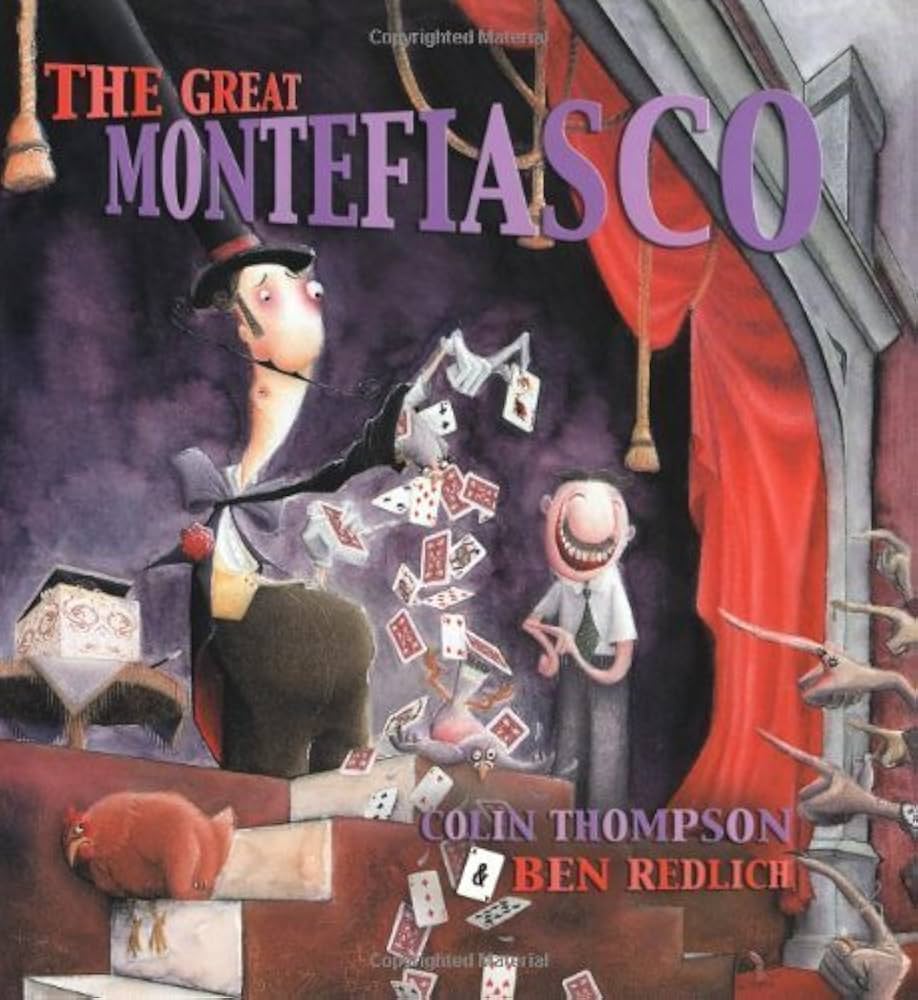
- Free Article: No
- Contents Category: Picture Books
- Review Article: Yes
- Article Title: Pleasure First
- Online Only: No
- Custom Highlight Text:
We read for pleasure; perhaps this way we find out more about ourselves. Pleasure comes first, a fact that is often lost when a book is overanalysed, always a danger when questions follow a pattern of interpretation designed to trace a line around a response. Picture books are particularly vulnerable, as their words are few and they are becoming more sophisticated, drawing on traditional, modern and symbolic art. Whether a child will find delight would be my first criterion for the purchase of a picture book. It doesn’t have to be all sweetness and light: a shiver of fear may be just as engrossing as laughter.
- Book 1 Title: There Once Was A Boy Called Tashi
- Book 1 Biblio: Allen & Unwin, 27.95hb, 32pp
- Book 1 Cover Small (400 x 600):

- Book 1 Cover (800 x 1200):

- Book 2 Title: The Boy, the Bear, the Baron, the Bard
- Book 2 Biblio: Allen & Unwin, $27.95hb, 32pp
- Book 2 Cover Small (400 x 600):

- Book 2 Cover (800 x 1200):

- Book 3 Title: The Great Montefiasco
- Book 3 Biblio: Lothian, $26.95hb, 32pp
- Book 3 Cover Small (400 x 600):

- Book 3 Cover (800 x 1200):

Here are three contemporary picture books claiming an audience among young children, with excellent illustrations reproduced in fine colour. In two, the principle that words and pictures should complement each other has been followed. The other, Gregory Rogers’s The Boy, the Bear, the Baron, the Bard does away with words altogether, and tells the story in pen-and-wash vignettes. A soccer-playing boy steps on a stage, travels through time to free a bear and a baron, has an encounter with Elizabeth I, all the while being chased by William Shakespeare. Rogers’s witty drawings, meticulously researched to present a bird’s eye view of Elizabethan London, show us the crowd: gap-toothed, dirty, over-dressed, capricious, class-ridden, superstitious and in love with life. First seen kicking a ball into the Globe, Rogers’s small hero, although almost a cartoon baby, has his expression changed with a touch of the pen, and Shakespeare, furious because the boy has disrupted his play (Romeo and Juliet) races across each page in thunderous style. There are overtones of a comic book as the square frames tell the story and demand to be read quickly. It has speed and action aplenty. Magic can happen: you can go back in time, put on an actor’s cloak, step onto the stage; a clever boy can outwit dastardly knaves from the past; bears are loveable, even huge brown ones. It is all quite reminiscent of Mitsumasa Anno, the Japanese artist who delighted the world of picture book aficionados with his illustrations in Anno’s Journey, Anno’s Medieval World and Anno’s Italy during the 1970s and 1980s. Like Anno’s work, The Boy, the Bear, the Baron, the Bard is intertextual and alludes to icons such as the crowd scenes of Pieter Bruegel; the many representations of bears through the ages; images from the Sistine Chapel; and other Western visual heritage. This clever book is apparently designed to indulge the author’s fascination with Tudor times. It is sure to be popular with adults, who will admire the artist’s skill. The ‘young children’ for whom the cataloguing says it has been produced may engage with it, though some readers may seek in vain for a point, except that it provides further power to the holiest name in the sacred canon. In the orbit of that name, there are sure to be adults who will write about it and disentangle its many threads. Even now, there are some of the most extensive Teachers’ Notes I have ever seen available on the publisher’s website: a whole curriculum on Shakespeare and his times stretching a rather long bow from the strands offered by the book.
Colin Thompson and Ben Redlich’s The Great Montefiasco claims a preschool and primary school audience, and this picture book is likely to please young readers and also adults, who will enjoy the fantastic images. Montefiasco is the worst magician in the world; the laughter that greets his catastrophes hurts him deeply. He is ready to give up until he hires an assistant, Betty, who, he hopes, will make things happen. Unfortunately, Betty is an even greater klutz than Montefiasco. But every cloud has a silver lining; Betty and Montefiasco are such a hoot that they become a roaring success, marry, have triplets and live happily ever after. Success has been grasped from what Montefiasco saw as defeat. The Monte- and Mini-fiascos ‘bring far more happiness to the world than any ordinary card trick ever could’. The story is accompanied by wonderful illustrations, each page full of warm, softly coloured and bizarre forms, mirror images, and disembodied toothy mouths. Gloomy fish, odd-eyed dolls, disconsolate chickens, owls, rats, bats, spiders and other unidentifiable creatures surround Montefiasco and Betty, who, like their associates, relatives and offspring, are elongated, distorted figures of wonder. The walls of their cluttered rooms are covered with posters (apparently gleaned from Dover Publications), which advertise ‘The Learned Pig’, great real-life magicians (including a man who cats stone) and other oddities. The Great Montefiasco is a witty visual feast for the young and not-so-young reader.
There Once Was a Boy Called Tashi by Anna Fienberg and Barbara Fienberg, with illustrations by Kim Gamble, is the least sophisticated of these books in terms of presentation, yet it is the most child-centred and the most likely to touch the most hearts. Children have met Tashi before, in ten books designed for small hands: here, Tashi and his friends are in a larger picture book format. Tashi’s village is threatened and trashed by the fearsome ogre Gloomin, who brings on a miserable winter for everyone because he is melancholy. ‘Black and cold and bitter as brine, / That’s my heart since I lost what’s mine.’ The endearing Tashi, who looks a little like Leunig’s Mr Curly, seeks to relieve the ogre’s misery by finding something or someone to keep the monster company. He and Lotus Blossom set off into the forest. where they ask the usual suspects for help without success, until they discover the wicked Baron sneaking about with a wriggling sack. Tashi’s wise understanding of the power of greed enables him to outwit the Baron and to satisfy Gloomin. The sun at last comes out over the village. The tale is simply told for the young reader, but it has poetry, excitement and charm. The story and Gamble’s beautiful watercolour illustrations of leafy forest and busy village life are integrated into the design of each page, so that text, character and scene are satisfyingly merged. There Once Was a Boy Called Tashi belongs to the tradition of the European folk tale: a young hero cares for his people and outwits evil; courage is rewarded; the village is saved; even the ogre finds a friend. We can all – adults and children – find something to think about in that.


Comments powered by CComment